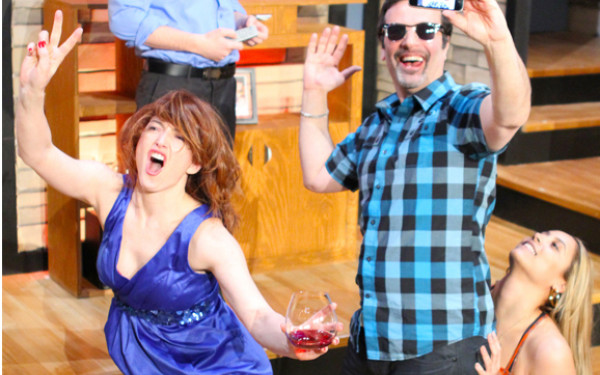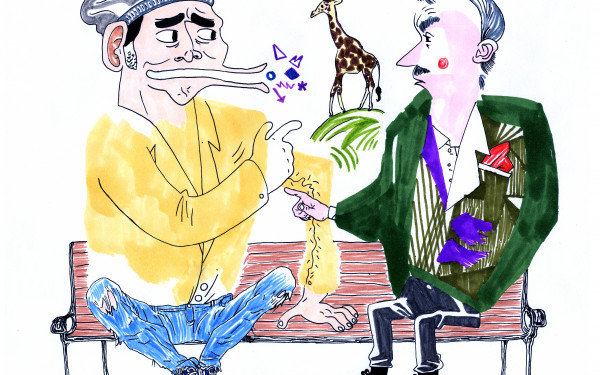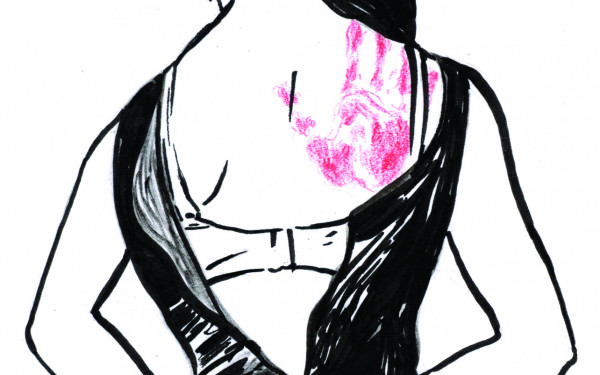Ape Escape
Infinitheatre Revives ‘Kafka’s Ape’ Production for Second Run
What does it mean to be human? What is it that makes us any better than our ape relatives? Could it be, perhaps, that we aren’t?
In Guy Sprung’s Kafka’s Ape, an Infinitheatre adaptation of Franz Kafka’s short story A Report to an Academy, audiences will be challenged to consider what exactly separates us from the jungle.
Kafka wrote the original tale during the height of World War I in 1917, when he was experiencing alienation and rejection from society as a secular Jewish man. His feelings of being an outcast provided the inspiration for his primate character Red Peter, an ape who recounts his story of being captured from the African jungle and taken from his land in a cargo ship in the original tale.
Red Peter describes to the audience (and the scientific academy) how, by observing the humans keeping him in captivity, he slowly taught himself to be human out of an instinct to survive.
In the adapted version of the story, he goes on to become a mercenary, an advocate of war and a master of killing, suggesting that by becoming human, he has ultimately become more of an animal than when he was an ape.
Kafka didn’t have the stage in mind when he wrote the story, but a team of local artists have brought the narrative to life with Kafka’s Ape. Montreal actor Howard Rosenstein portrays the protagonist ape-turned-human and is accompanied by Ontario-bred actress Alexandra Montagnese, who acts as Red Peter’s date to the academy.
Montagnese’s character has not adapted human-like qualities and acts as a presence of what Red Peter used to be—an animal. Montagnese said it was a challenge creating a character without dialogue and few human characteristics.
“My character is a prop, used to make Red Peter look more distinguished, trapped in what is expected of her—though I am his companion,” Montagnese explained. “We share common experiences and know each other’s pain.”
Humannequins
Many hours were invested in perfecting the physicality of the actors, who watched videos on the nature of chimpanzees for training, and received help from two professional movement coaches. Rosenstein and Montagnese learned to morph their bodies to capture the essence of apes as realistically as possible.
“It’s rigorous work. We treated our environment like a jungle,” said Montagnese.
Rosenstein added, “An ape’s movements are very much like ours, though physically it does take a toll on the body.”
The transformation from human to ape also involved a lot of time spent in the makeup chair.
“I spend more time getting makeup on than I do on stage,” said Rosenstein.
The extensive makeup process means spending an hour and a half with makeup artist Vladimir Cara applying their ape-like features, and 45 minutes getting it removed after the show.
Rosenstein also adorns large primate teeth for his character—something he admits is uncomfortable to wear, but essential in helping him mentally transform into his character.
“The teeth I wear push out my lips like an ape, they’re like an inner mask,” Rosenstein said. “I put them in and know exactly who I am as Red Peter.”
Montagnese’s character has an even more excessive face-piece and a full ape suit, limiting her movements.
Once makeup and costumes are on and ready the actors practice mental preparation and getting into character prior to the performance. Montagnese can be found backstage interacting with the crew as if she were an ape.
“It’s funny what it brings out in people,” she says of the crew’s reactions to her monkeying around.
“I run around on all fours, knocking shit over; it feeds me.”
She pretends the green room is a cage, and bounds out as if she were being let out of captivity when the show is called.
Rosenstein’s process is much more internal—he says it’s the energy from the audience that feeds him. Prior to performance he can be found backstage, listening to the audience and “connecting with them even before they’re engaged.”
This process, though, is a familiar exercise for the two performers. Infinitheatre’s upcoming production of Kafka’s Ape is a remount of the same production put on last winter.
“Revisiting a show allows us to add layers to our characters, enhancing or changing our interactions, exchanges and physicalities,” said Montagnese.
With the success and praise from the initial showing of Kafka’s Ape, the heightened expectation adds a greater level of pressure on the actors.
“I hope to live up to the last run,” said Rosenstein.
Kafka’s Ape // Nov. 7 to Nov. 24 // Bain St-Michel Theatre (5300 St. Dominique St.) // 8 p.m. Tuesdays to Saturdays, 2 p.m. Sundays // $20 students, $25 regular

_900_675_90.jpg)
_600_832_s.png)

_600_375_90_s_c1.jpg)


